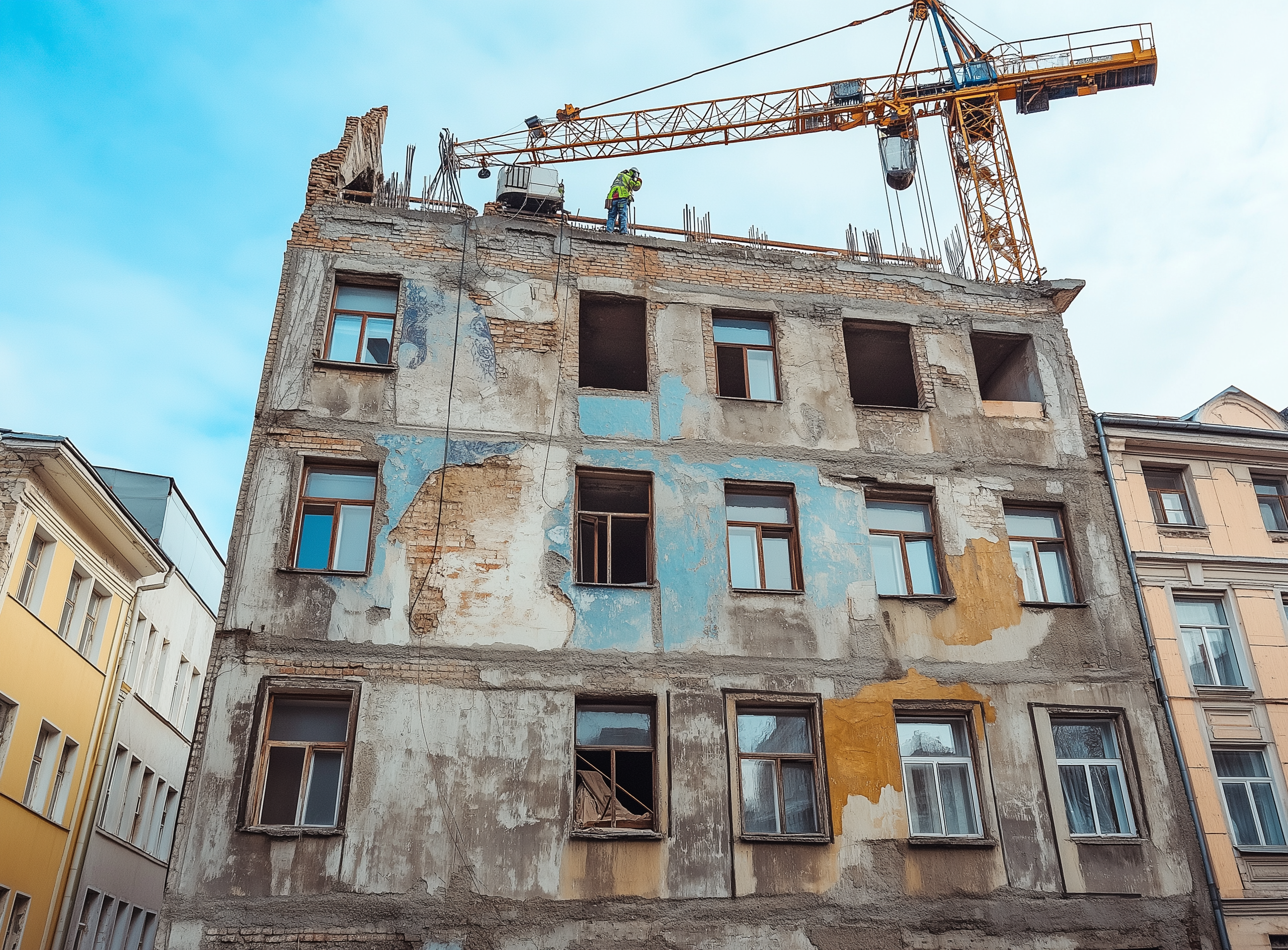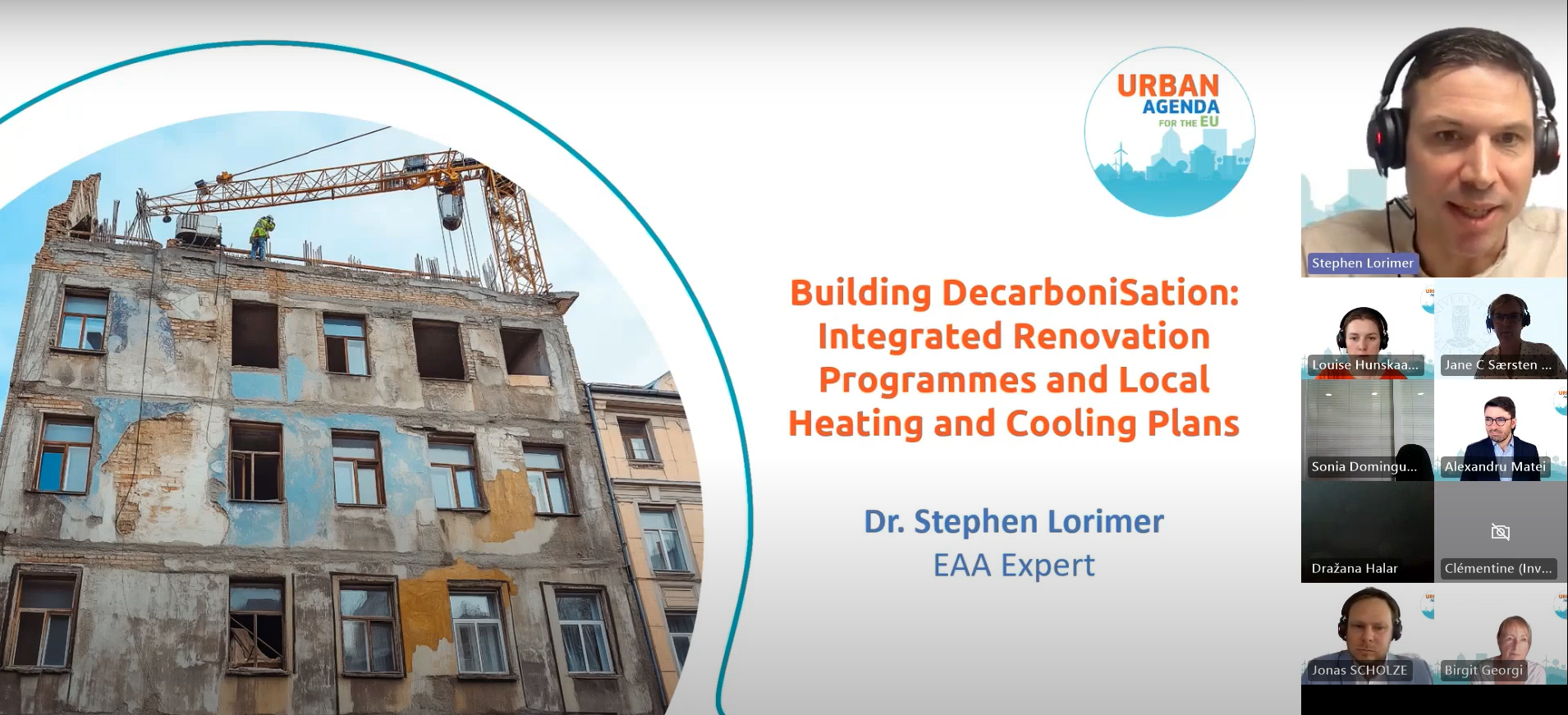
Building Decarbonisation: Insights from the Ex-Ante Evaluation Expert.

Stephen is an urban practitioner with a PhD in Energy and Building and co-founder of the software Building Atlas. In our conversation, Stephen touched upon the content of the EAA, its discoveries, conclusions and recommendations.
What is an ex-ante assessment (EAA)?
Stephen: An ex-ante assessment is an evaluation conducted before a project, programme, policy, or decision is implemented. It maps out tools and resources available to execute the policies of Building Decarbonisation for the Partnership. The methodology of elaborating an ex-ante assessment typically includes interviews with people working in different parts of the European Commission (e.g. DG REGIO, DG ENER, DG GROW, etc.) combined with a desktop review to find out what is out there regarding the topic and what are the evolving policies concerning Building Decarbonisation.
What is the topic of Building Decarbonisation about?
Stephen: Decarbonisation of housing is about how cities need to reduce operational energy consumption, increase the availability of flexible energy sources, and improve the standards of building renovations to meet future needs. The goal here is to increase the rate of renovation, by focusing on integrated renovation programmes set within the revised Energy Performance of Buildings Directive (EPBD).
The new partnership will focus on decarbonisation and renovation of all buildings, publicly and privately owned. The EAA recognised that cities have paid less attention to the incentives needed to encourage private building owners to increase their rates of retrofits and decarbonisation. Additionally, the partnership will explore how cities can use their own buildings as leverage for future efforts.
What are the most important (top 3) recommendations you proposed in the EAA?
Stephen: (1) In the topic of Building Decarbonisation the biggest gap is around finance.
We found out that those who want to lend money want to see something big (big projects). Smaller and medium-sized cities need to recognise that they need to find that scale and/or partner with each other. Larger cities have a bit more advantage in this regard.
(2) Support for building owners in integrated renovation programmes needs to evolve from the traditional one-stop solutions, which focus on individual units, to a more comprehensive approach. This involves enhancing their knowledge, refining their recommendations, and coordinating efforts to implement renovations on a district-wide scale.
(3) Finally, finding effective ways to fund renewable energy communities and integrate them into the future is crucial. Currently, the approach often feels like simply “handing out free money” to interesting projects, but it needs to evolve into a system that is more closely tied to loans and financial mechanisms.
What are the opportunities in relation to Building Decarbonisation that European cities can take advantage of?
Stephen: (1) The first opportunity is about the economies of scale.
Building decarbonisation shouldn’t be about individual building-by-building or property-by-property renovations but about integrated programmes. Performing unit-by-unit renovations is firstly not fast enough and secondly, costs way more. This topic calls on cities to explore what can be done about policies and communication, to convene different owners together for the sake of increasing the rate of renovation. Solutions around economies of scale could ensure the supply chain being able to supply many things at once which is way better than just one at a time (e.g. heat pumps, solar panels, or fabric renovations).
(2) The second opportunity could be the creation of jobs in the supply chain.
(3) Finally, the third opportunity is the ability to access finance when you are doing economies of scale in ways that you couldn't before.
Are there any synergies between the topic of the new partnership and previous UAEU partnerships?
Stephen: Different partnerships are related to the topic of Building Decarbonisation:
The Energy Transition Partnership is the one that is probably the closest to the new partnership. While developing the EAA, I met with the Netherlands delegation of the Energy Transition Partnership, which has a task group exploring how to finance district energy, what guidance is needed for an energy master plan, and how to increase one-stop solutions for cities. These questions go hand in hand with the decarbonisation of housing topic.
The Housing Partnership was focused specifically on the deliverables for affordable and social housing and funds for the retrofit of affordable and social housing (or buildings that are directly under the construction of Local Authorities). The Building Decarbonisation partnership is looking not just at social housing but also at all kinds of buildings owned by the public and private sectors.
UAEU partnerships bring together the representatives of the EU institutions, member states, cities and other (Partnership theme relevant) stakeholders to bring about better regulation, funding and knowledge for each UAEU Partnership theme. The UAEU multilevel cooperation method is one of the key transferable lessons in the context of international development. Within the partnership governance structure, future members of the Building Decarbonisation Partnership will be able to advance the aims and objectives of the theme and experiment with better coordination in a neutral setting between the multiple stakeholders. The challenge for the new partnership will be to focus on district and neighbourhood-level approaches to renovation, aiming to leverage economies of scale.